8. Wearables¶
Research¶


References & Inspiration¶
Notes from the class : design, function and use considerations.¶

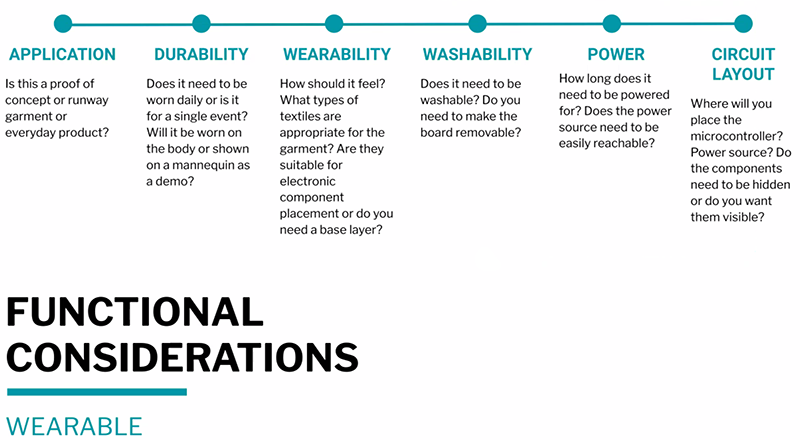
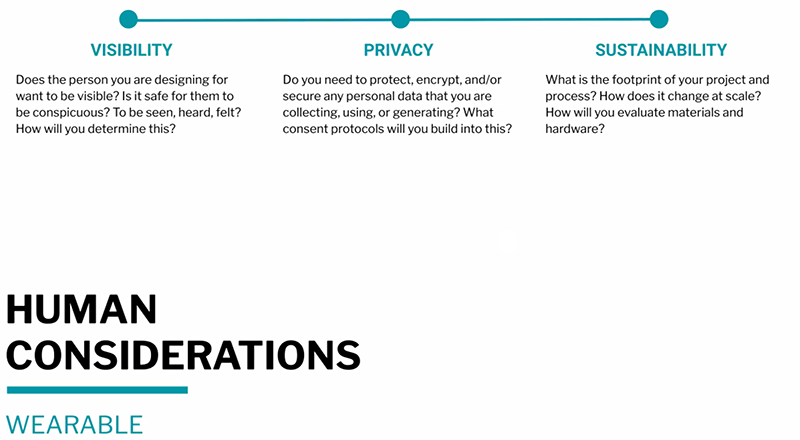
Vocabulary1 from Liza's class.¶
WHAT IS AN ACTUATOR ? Component of a circuit that moves or controles another part based on input = an output led, speakers < examples
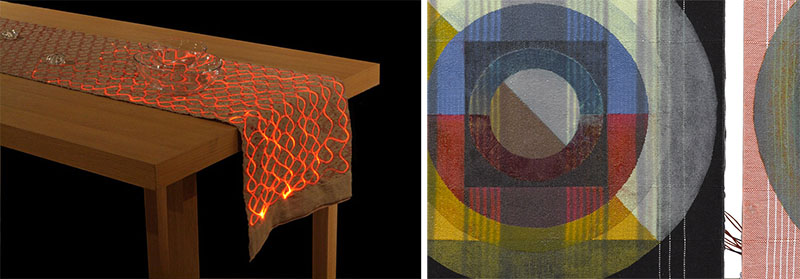 Work of Maurin Donneaud - Lucette on the left and Maggie Orth - Moving target on the right. She uses combo of conductive thread and thermochromic inks for her paintings.
Work of Maurin Donneaud - Lucette on the left and Maggie Orth - Moving target on the right. She uses combo of conductive thread and thermochromic inks for her paintings.
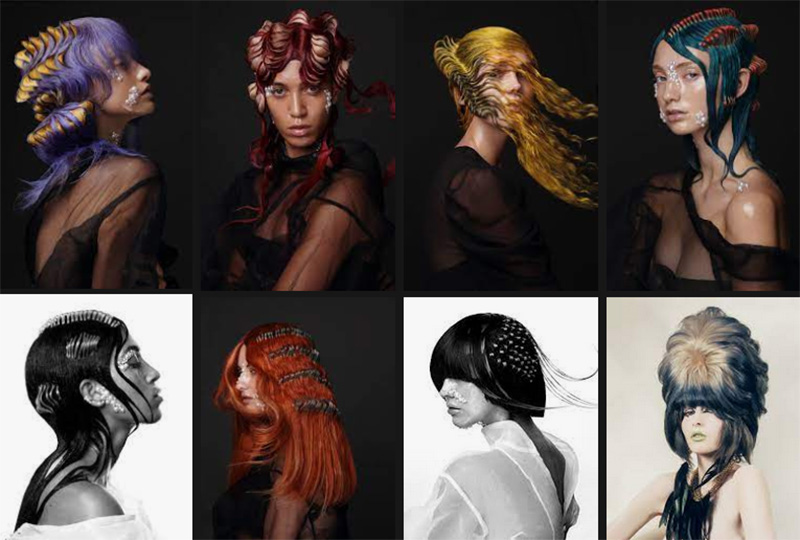 Emmanuel Esteban - hair styler.
Emmanuel Esteban - hair styler.
I like the way colors spread on the hair, subtils dégradés and graphic structures.
Tools¶
Cute experiences with a magnet and a magnetic perl
First you roll onto a stick a certain length of copper thread in order to get a "ring". Scotch a magnet under a tape, when the "ring" approaches the magnet, they repulse each other so that creates a motion.
The second on the right is on the same principle but with a magnetic bead which "jumps" on the "ring" thanks to their opposing magnetic forces.
Process and workflow¶
From layette to layette¶
Several possibilities of work with sound, movement or color. I chose by elimination the color theme. We worked with thermochromic pigment, its base color being a light blue and its heated color a pale pink.
I worked on this theme with Zoé but we weren't really excited about these two colors, they didn't inspire us. We wanted to modify them at all costs by adding classic pigments.
I didn't understand why last year's recipe was glue-based. I thought it was more normal to mix pigments with already existing paint rather than glue.
based on Capucine's last year tests with my adjustements:
10g white acrylic (instead of glue)
0,5g thermochromic pigments
0,1g to 0,3g other pigments (ocre, red, or light green)
sip of water
Zoé's first test was with black pigment and didn't work.
We had better results with not too dark pigments.
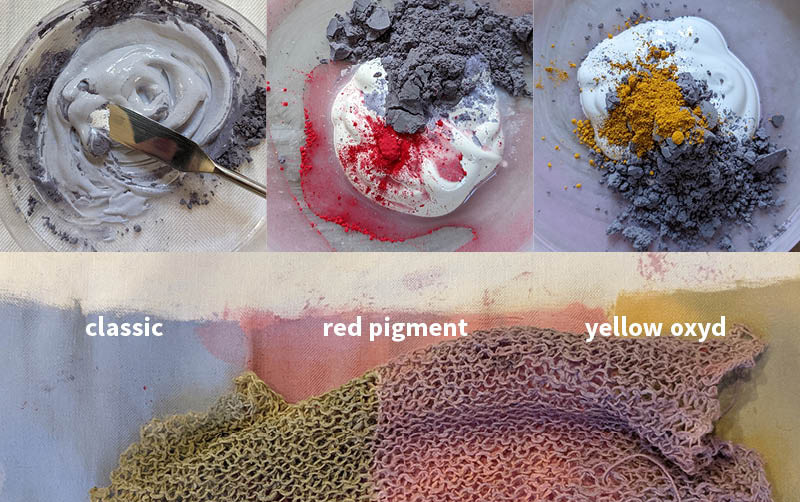
New color set:
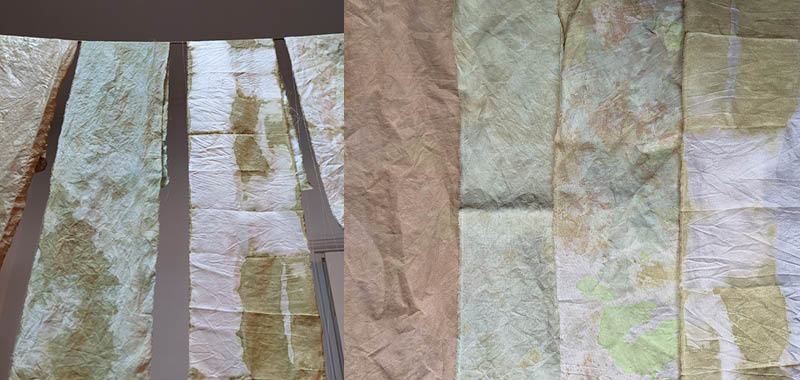
Heating¶
Example from Liza Stark :
Testing the color reaction quickly with the iron
With conductive thread, heating straight from the battery (not recommanded, but usefull to check quality of reactivity).
How's your blanket ?¶
I painted on white fabric, a sample of each color then assembled them in patchwork and quilted with the conductive thread and classic threads. I connected the little plaid to the circuit, but alas the 9V battery was not enough. No result. I was able to get some by connecting the battery directly to the small plaid -which is not recommended- on about 1/3 of the path of the conductive thread and only by going little by little. This requires too much energy and the battery went down.
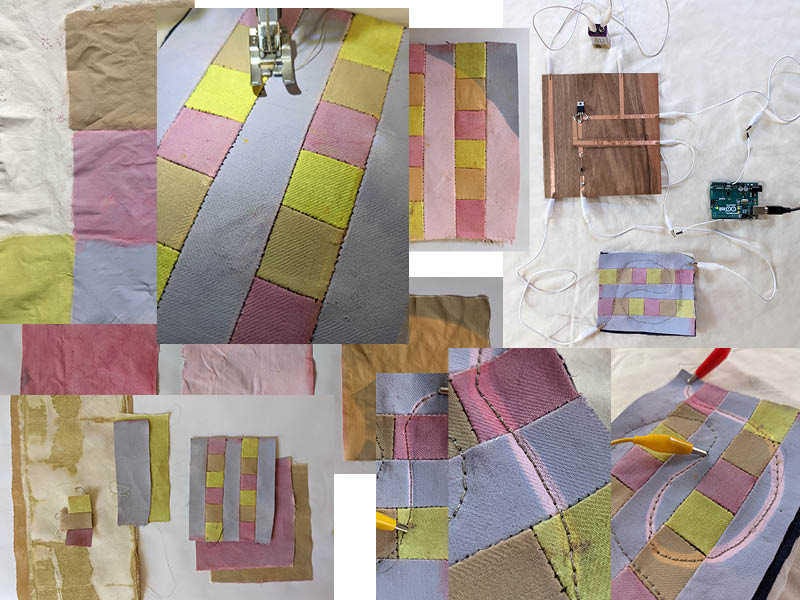
I decided to call this project How's your blanket ? to make a nod to the line from the movie OSS 117 - Cairo, nest of spies because, depending on the program chosen, the little plaid will not be identical, its colors will change, so this question would come naturally: "how's your blanket ?" the parallel between the word blanquette and blanket is funny, knowing that it is used by a secret agent as a password to recognize his contact. Here, the blanket being in contact with the current since in a circuit, is going to change color as if it also showed itself under its secret day. The question, so banal and light is in complete opposition to what it is the vector: to establish a secret contact known only by the two parts supposed to meet discreetly. Wouldn't this cover be even more than a simple cover?

Wiki definition: In the fields of police and intelligence, a cover is an activity intended to mask the real functions of an officer. The latter can thus devote himself to his activities which can be, according to the cover, the recruitment and the treatment of sources (known as agents) without attracting the attention of his environment, to insert himself in a foreign country, to work for an organization of interest, or still, as regards the police force, to penetrate a criminal network in order to collect information there and possibly to surprise a flagrant offence.


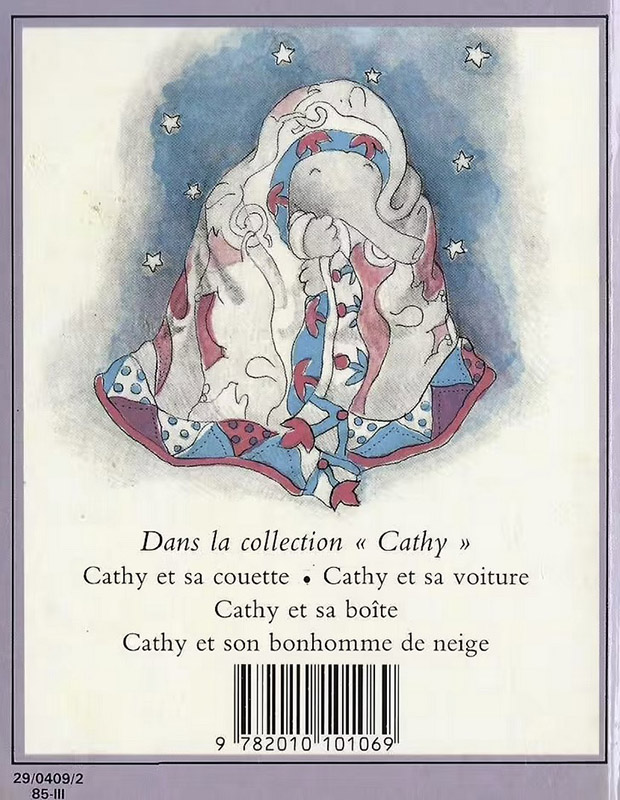
I make a personal parallel with this little book I had as a child : Cathy and her blanket. It's a little girl who receives as a gift from her mother, a patchworked blanket. She doesn't want it and she is very disappointed because she was expecting another gift. She refuses to sleep with, hurting her mother. But during the night, she feels cold and has nightmares. She gets out of bed to put the blanket/comforter (takes all its sense) back on, and immediately falls asleep, reassured by its warmth. The next day she apologizes to her mother and that's it.
Shanti Soundsystem¶
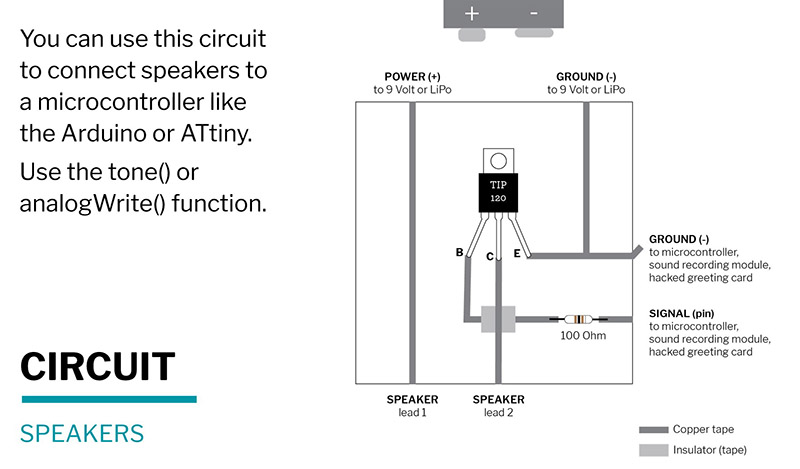
Hand knitted copper wire for a project with Amandine on the speaker. We realized that the length of the wire wasn't necessarily strictly 8 ohms so I knitted a small jersey sample that we plugged into the circuit and ran the arduino program with Star Wars music (Emma's document).
More details on Amandine's page : code, circuit, etc.
Up to come: Copperfield¶
I sculpted chopsticks to have wanted size of knitting needles.
Then knitted a larger piece of conductive thread, size of a palmhand.
 with Amandine
with Amandine
Code Example¶
Working with a Neopixel 10 RGB LED, from Emma's code, I parametered the LEDs colors by pair up to 10.

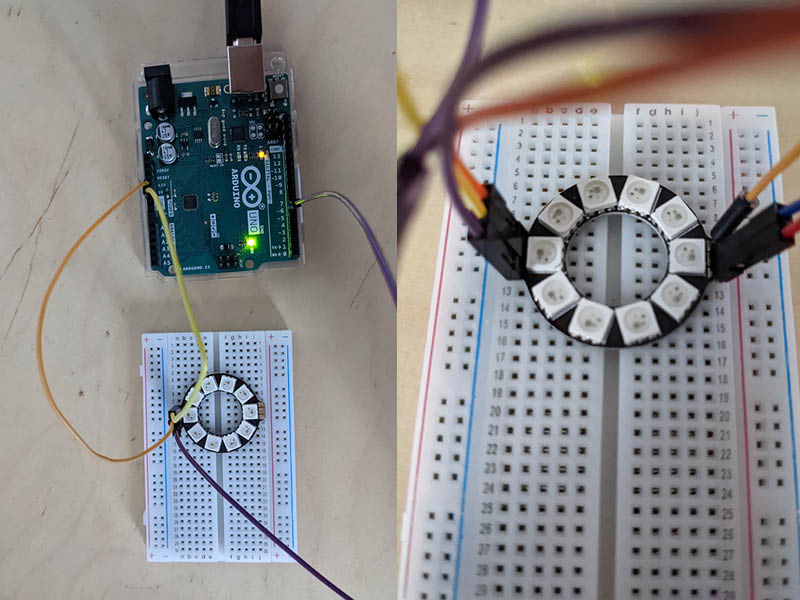
/*
* Emma Pareschi
*
* Basic commands of Library Adafruit_NeoPixel
* Using some parts from the example "strandtest"
*/
#include <Adafruit_NeoPixel.h>
// Which pin on the Arduino is connected to the NeoPixels?
#define PIN 6
// How many NeoPixels are attached to the Arduino?
#define NUMPIXELS 10
// Declare our NeoPixel pixels object:
Adafruit_NeoPixel pixels = Adafruit_NeoPixel(NUMPIXELS, PIN, NEO_GRB + NEO_KHZ800);
// Argument 1 = Number of pixels in NeoPixel strip
// Argument 2 = Arduino pin number (most are valid)
// Argument 3 = Pixel type flags, add together as needed:
// NEO_KHZ800 800 KHz bitstream (most NeoPixel products w/WS2812 LEDs)
// NEO_KHZ400 400 KHz (classic 'v1' (not v2) FLORA pixels, WS2811 drivers)
// NEO_GRB Pixels are wired for GRB bitstream (most NeoPixel products)
// NEO_RGB Pixels are wired for RGB bitstream (v1 FLORA pixels, not v2)
// NEO_RGBW Pixels are wired for RGBW bitstream (NeoPixel RGBW products)
//pack the color in one variable
uint32_t red = pixels.Color(255, 0, 0); //RGB
uint32_t blue = pixels.Color(52, 180, 173);
uint32_t green = pixels.Color(245, 255, 0);
uint32_t magenta = pixels.Color(255, 0, 255);
uint32_t yellow = pixels.Color(0, 200, 255);
uint32_t off = pixels.Color(0, 0, 0);
int delayval = 200; // delay for half a second
void setup() {
pixels.begin(); // This initializes the NeoPixel library.
pixels.show(); // Turn OFF all pixels ASAP
pixels.setBrightness(15); //from 0 to 255, use it only in setup
}
void loop() {
pixels.fill(red, 0, 2);
pixels.show();
delay(delayval);
pixels.fill(blue, 2, 2);
pixels.show();
delay(delayval);
pixels.fill(green, 4, 2);
pixels.show();
delay(delayval);
pixels.fill(magenta, 6, 2);
pixels.show();
delay(delayval);
pixels.fill(yellow, 8, 2);
pixels.show();
delay(delayval);
pixels.fill(off, 0, 10);
pixels.show();
delay(delayval);
}
Conclusion¶
I have been much more motivated to work on the pigment color change step than by creating the circuit. Also still loosing too much time building things in gitlab.